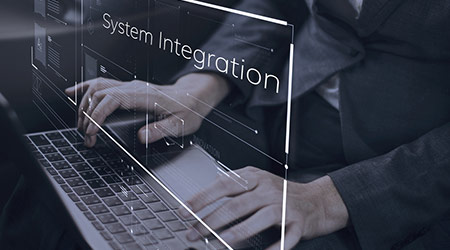The mission for hospitals, clinics and other healthcare facilities is to provide exceptional patient care in a comfortable, safe environment. To do so requires both skilled physicians and an efficient facility. Fortunately, innovation is paving the way for technology to help physicians focus on their jobs and allow a facility to run as efficiently and safely as possible. The integration of smart, connected solutions is key to achieving exceptional patient care in comfortable, safe environments, while benefiting patients, staff and a facility’s operations as a whole.
The benefits of systems integration for patients and staff
A connected ecosystem of building systems in healthcare facilities offers benefits ranging from predictive maintenance to patient safety. By leveraging connected technologies, healthcare facilities can enhance safety and security as well as operational efficiencies, resulting in improved patient care. For example, smart lighting can be implemented in patient rooms allowing them to control the lighting in their own rooms to provide optimal comfort levels, which helps improve healing. Lighting also doubles as a safety tool and can be used in an emergency situation to indicate threatened areas and guide occupants to a safer location where they can shelter in place.
Additionally, video surveillance and access control are basic security features that, when connected, provide greater insight into occupant management. In a healthcare facility, there’s a revolving door of visitors and patients, making it challenging to keep track of everyone. Integrated with analytics and emergency response systems, video surveillance and access control can be used to help security personnel ensure that only approved individuals are granted entry into certain areas of a healthcare facility, such as the pharmacy. It can also improve response time, notifying emergency responders the minute there is suspicious activity that needs to be addressed.
Of course, maintaining the continued health of building systems is crucial for the overall well-being of a healthcare facility, its patients and staff. This unified view of data across buildings on a healthcare campus provides a more productive, efficient facility, and helps provide insight into staff and patient operations. For example, when a chiller goes down an immediate response is needed, as it has a direct impact on the patients’ comfort levels, healing capabilities and safety. Connected systems that can communicate with one another can predict maintenance issues, allowing technicians to fix the system before patients and staff are affected.
Making a smart, efficient healthcare facility possible
The healthcare industry is constantly evolving making infrastructure upgrades a necessary step for facilities to stay competitive. However, many struggle to find the budget to make these upgrades possible. Thankfully, there are innovative ways to help fund infrastructure improvements to keep patient experience a top priority.
An Energy Performance Contract (EPC) for example, can help enhance operational efficiency and reduce associated costs. EPCs ensure that the projected savings will offset the cost of the building improvements over a fixed period of time. Baptist Memorial Health Care Corporation was able to upgrade their lighting systems, conserve water, upgrade and replace HVAC systems, and update their control systems for maximum efficiency through the help of an EPC. These improvements to their older infrastructure helped them address major deferred maintenance without having to raise healthcare costs.
Partnering with a technology contractor is yet another way that facilities can make improvements while staying within their means by cutting back on unnecessary duplications of technologies, budget overruns and schedule delays. Methodist Le Bonheur Healthcare (MLH) successfully defined a sustainability strategy that included the construction of Le Bonheur Children’s Hospital – now one of the nation’s top children’s hospitals – with the help of Technology Contracting. This approach to technology planning, design, and construction addressed all clinical, facilities, and business technology needs for the hospital – systems included nurse call systems, local area network, wireless local area network, voice over IP systems, building automation systems, security systems – just to name a few. Centralizing their needs and priorities along with a coordinated installation and integration helped MLH keep the project on track, while also improving the ease of operations and maintenance of the network.
When healthcare facilities are connected and integrated, healing environments are more comfortable and efficient allowing healthcare providers to achieve their mission of improving patient outcomes and care. Using a patient-focused approach to infrastructure upgrades is the best way for healthcare facilities to reach their goals and improve patient satisfaction for all.
Fadi Kiameh is a Business Development Manager for Johnson Controls.

 Contaminants Under Foot: A Closer Look at Patient Room Floors
Contaminants Under Foot: A Closer Look at Patient Room Floors Power Outages Largely Driven by Extreme Weather Events
Power Outages Largely Driven by Extreme Weather Events Nemours Children's Health Opens New Moseley Foundation Institute Hospital
Nemours Children's Health Opens New Moseley Foundation Institute Hospital Code Compliance Isn't Enough for Healthcare Resilience
Code Compliance Isn't Enough for Healthcare Resilience Ribbon Cutting Marks First Phase Completion for New Montefiore Einstein Facility
Ribbon Cutting Marks First Phase Completion for New Montefiore Einstein Facility